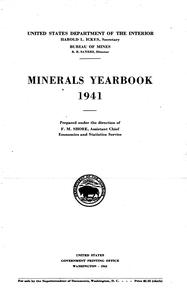[Part 1 of 3]
The Manhattan Project was top priority for the War Effort in WW2.
Construction began in February 1943 under the management of Stone & Webster. According to Wikipedia and industry analysts such as CPM Group, it was because of a wartime shortage of copper, that the massive electromagnetic coils for enriching the uranium were made with 14,700 tons of coinage silver borrowed from U.S. government vaults at West Point.
However, this narrative is not correct according to period government reports and The American Institute of Chemical Engineers, who explained the Manhattan project choose silver for its superior conductivity over copper.
The importance of the Manhattan project cannot be understated and for this reason, whatever material that was requested was allocated away from other demands. Should they have wanted copper, they would have got it.

The copper shortage occurred in 1942, but by 1943 it was alleviated, and in January 1944 copper was removed from the list of critical materials.
14,700 tons of any material sounds like a lot, but the US sent 31 million tons of copper to the Soviet Union, including nearly one million miles of copper telephone wire, thanks in full to the Lend-Lease Act.
Fallen France; Broke Britain
By the end of 1940, Great Britain was at the breaking point against Germany. The cost of fighting on land, at sea and in air had drained the country’s reserves of silver and gold currency and France had already fallen to German occupation.
On November 23, Britain’s ambassador to the US, Lord Lothian, arrived at La Guardia Airport (NY) where he held an impromptu press conference.
Talking to the press, he said, “Well boys—Britain’s broke; it’s your money we want.”
Major foreign policy debate erupted over whether the US should aid Great Britain or maintain strict neutrality.
During his 1940 Presidential election campaign, Roosevelt promised to keep America out of the war. Nevertheless, FDR wanted to support Britain and believed the US should serve as a “great arsenal of democracy.”
And Churchill pleaded, “Give us the tools and we’ll finish the job.”
Balancing both his campaign promises to keep American out of the war, but also answering to Churchill’s pleas for support, FDR proposed to Congress a new military aid bill.
Passed on March 11, 1941, the Lend-Lease Act set up a system that allowed the United States to lend or lease war supplies to any nation deemed “vital to the defense of the United States.”
This would be the start of today’s Military Industrial Complex.

Lend-Lease Act (1941)
While not officially in the war, the bill allowed the US to prepare for it while remaining “officially” neutral while meeting Great Britain and her then colonies’ dire need for supplies.
The President was given sole power to decide the terms and conditions upon which any foreign government received aid, and how the US would benefit from repayment.

These supplies included silver, which was critical for the war effort and commerce at the time.
Despite the overall public skepticism that dated from America’s involvement in World War I (1917-1918), the traumas of which caused many Americans to embrace isolation from world affairs.
By the 1930s, as fascist aggression in Europe provoked a series of international crises, isolationist members of Congress passed a series of Neutrality Acts that severely limited the extent to which the Roosevelt administration could respond to these crises.
The Lend-Lease act all but invalidated those Neutrality efforts after it was passed, turning the nation once peaceful into the largest arms dealer in the world, an inconvenient truth that still persists today.
Silver Holdings and Wartime Uses
The US Silver Purchase Act said that “one-fourth (25%) of the total monetary value of the gold and silver stocks shall be in silver,” but the proportion of silver on December 31, 1941 was 15.7% and 15.6% the year before.
The US Treasury silver holdings on December 31, 1941, approximated 3,280,000,000 fine ounces.
This represented slightly over 100,000 tons of silver.
Early in 1942 it was stated that the Treasury would lend 40,000 tons of silver for electrolytic busbars for making magnesium and for certain other war uses.
The utilization of silver in the arts and industries saw phenomenal increases at this time. For comparison, in 1935, consumption was around 5 million ounces of silver, but this leaped to 72 million ounces in 1942.

In fact, for many years the greatest consumer of silver was for silverware, which in 1941 used an estimated 30 million ounces. The amount is considerably more than double that consumed by the same industry in 1940 and is attributed in great part to increased purchasing power of the public and to the great number of marriages as a result of enlistments and inductions into military service.
In 1941 the war industries and others began using increasing amounts of silver; in 1942 war uses of the metal expanded rapidly. This trend was brought about by the substitution of silver in many articles formerly made of nickel, chromium, aluminum, copper, and tin and by the industries employing silver in new ways because of the desirable properties that it possesses.
Of particular importance was the greatly increased use of silver solder and brazing alloys, which are made in a wide variety of types containing 10 to 80% silver, with the remainder copper, zinc, or other metals. Those in greatest use contain 40 to 50% silver.

Silver solders and brazing were used in ignition-wire shields for aircraft engines, preventing radio interference; in the manufacture of oil coolers and radiators for airplane engines; and in airplane instruments, pipe connections, parts of the fuselage, and repair work.
In armament, they are employed in joining the cylinder heads in the recoil mechanisms of antiaircraft guns and field artillery pieces; in the brazing of jackets of machine-guns; in the construction of torpedo tubes; and in the joining the nose pieces of aerial and incendiary bomb shells and tubes.
Silver brazing alloys are widely used in the construction, maintenance, and repair of ships in joining pipes, and in equipment for air conditioning and refrigeration; also, in the construction of motors, and headlight connections and pneumatic systems of automobiles; and in the assembling of parachute rip rings and the brazing of joints of army field-kitchen stoves. Numerous other uses in a wide variety of electrical equipment and appliances as well.
A new and important use of silver at the time was plating of aircraft bearings, which were coated with a thickness of 0.025 inch. This use alone was expected to use 5 million ounces in 1942.

Coin silver (90% pure) was employed to form seals and cushion ends for pistons in the recoil chambers of antiaircraft guns and field-artillery pieces, and 9.5 pounds of silver went into the recoil mechanism of each 155-mm. gun and each 8-inch howitzer.

Silver started to replace tin in soft tin-lead solders and in high-tin Babbitt metal; nickel silver in the manufacture of watch cases; tin-antimony alloys in costume jewelry; aluminum as a reflective coating for “seal-beam” headlights and in vacuum bottles; and brass in many important ways.
It was being substituted for copper in low-voltage wiring and in busbars so extensively employed in plans manufacturing aluminum and magnesium.
Silver alloyed with about 10 percent copper finds much use in electrical contracts, for which it is well-adapted because of its conductivity of electricity and heat; too, the oxide formed at some contacts decomposes at 572F and returns to pure silver and thus does not build up high resistance.
Silver added in small amounts to copper improves copper to be soldered by presenting undue softening from heat; in commutator bars by ensuring hardness; and in photoengravers’ plates by preventing softening of the cold-rolled copper sheets processed at increased temperatures.
Nearly 60% of the silver consumed in the US in 1942 went to war production, and this portion was expected to grow greatly in 1943. Silver was used in virtually every airplane, tank, submarine, battleship, cargo ship, and field kitchen and in many kinds of instruments, guns, bombs, torpedoes, shells, and other weapons.
It was evident at this time that silver occupied a new important place in the war domain. Extensive research began on the metal that was developing new uses rapidly. The stockpile, once considered to be large, started to disappear quickly.
Never had a commodity readjusted its position in commerce so abruptly.

War Rages On; More Silver Is Consumed
As the war continued, by 1942 agitation became strong for silver to do its full share in the war, and to further this objective, Secretary Morgenthau announced in February that he had recommended that all silver legislation be struck off the books to get silver into greater productive service.
The Treasury at this time held about 47,000 tons of unallocated silver, that is silver that wasn’t needed for coin or as a reserve against outstanding silver certificates. It could be lent, but it could not be consumed in a manner where it could not be returned to the Treasury.
On April 7, the Attorney General ruled that the Treasury could legally issue this silver to war-production plants for non-consumptive purposes, and on May 6 an agreement was made for leasing unpledged bullion to the Defense Plant Corporation and for delivering it as needed for manufacture into nonsummable forms.
Increased demand by both essential and nonessential users and decline in supplies from normal sources soon created a shortage of silver, so that early in July the Beauru of Industrial Conservation recommended that silver no longer be used as a substitute for other scarce metals.
The situation rapidly became worse, and on July 21 silver was placed on the restricted list of imports by the War Production Board. Under this provision the private importation, sale, processing, or shipment of silver beyond the place of initial storage was prohibited, except by special authorization from the Board.


On July 29, the Board ruled (Conservation Order M-199) that after October 1 no foreign silver could be purchased or processed for certain nonessential civilian uses, except to fill orders with a preference rating of A-3 or higher.
On September 17, Secretary Morgenthau announced that the Treasury has 5 million ounces of silver ordinary, that is silver not acquired under silver monetary legislation, which could be sold outright at 45 cents an ounce to industrial users with high priority ratings on recommendation of the War Production Board.
Priority orders on hand failed to absorb all this silver.
Demands for the release of Treasury silver continued to grow during the year. The Silver Users Emergency Committee, formed early in September, was very active in influencing Congress and the public toward proposed legislation that would make available to both essential and nonessential industries the ample supply of Treasury silver not actually in the form of coinage.
The Green Bill was endorsed by Treasury, the armed services, the War Production Board, and many others; that as a substitute for tin, copper, cadmium, nickel aluminum, antimony, tungsten, and other metals, the US government silver hoard was a valuable stock pile but kept by the Treasury this hoard was useless; that used in airplane and other engines this silver would help sweep the Japanese from the seas; in vital parts for tanks and trucks, it would help annihilate Hitler; but buried at West Point, it was a monument to folly.
Opposition to the Green Bill stoutly held that the enemies of silver were seeking to use the intrinsic value of the metal for war purposes as a vehicle to strike down silver as money; that history teaches that silver is the oldest and best monetary metal and that it is the only legal money of the United States at the time; that as an economic weapon at the peace table, the US great supply of silver would be equally as potent as in war; that an abundance of silver had been coming on the market to meet the demands of American war industries; that complaints of insufficient came not from war industries but from manufacturers of nonessential articles who were out to make a larger profit in advocating the enactment of a law that give them the privilege of buying US Treasury silver that was acquired solely for use as money; and that so much silver is now a byproduct of base-metal mining that to lower the price of silver would deal a serious blow to the economic stability of the base-metal mining industry.
Silver consumption for industrial purposes continued to mount rapidly in 1942, rising to 101 million ounces used and unreturned for industrial purposes that year.

This concludes Part One of Three. We will continue until the end of the war and the results in upcoming publications.
Sources:
(Silver Statistics)

https://search.library.wisc.edu/digital/APOA2SM44KGB3I8X
https://search.library.wisc.edu/digital/ARDBON6NZYEO6J8Z
(Lend Lease)
https://www.archives.gov/milestone-documents/lend-lease-act
https://s3.amazonaws.com/NARAprodstorage/lz/rediscovery/08975.pdf
https://history.house.gov/HouseRecord/Detail/25769811491









